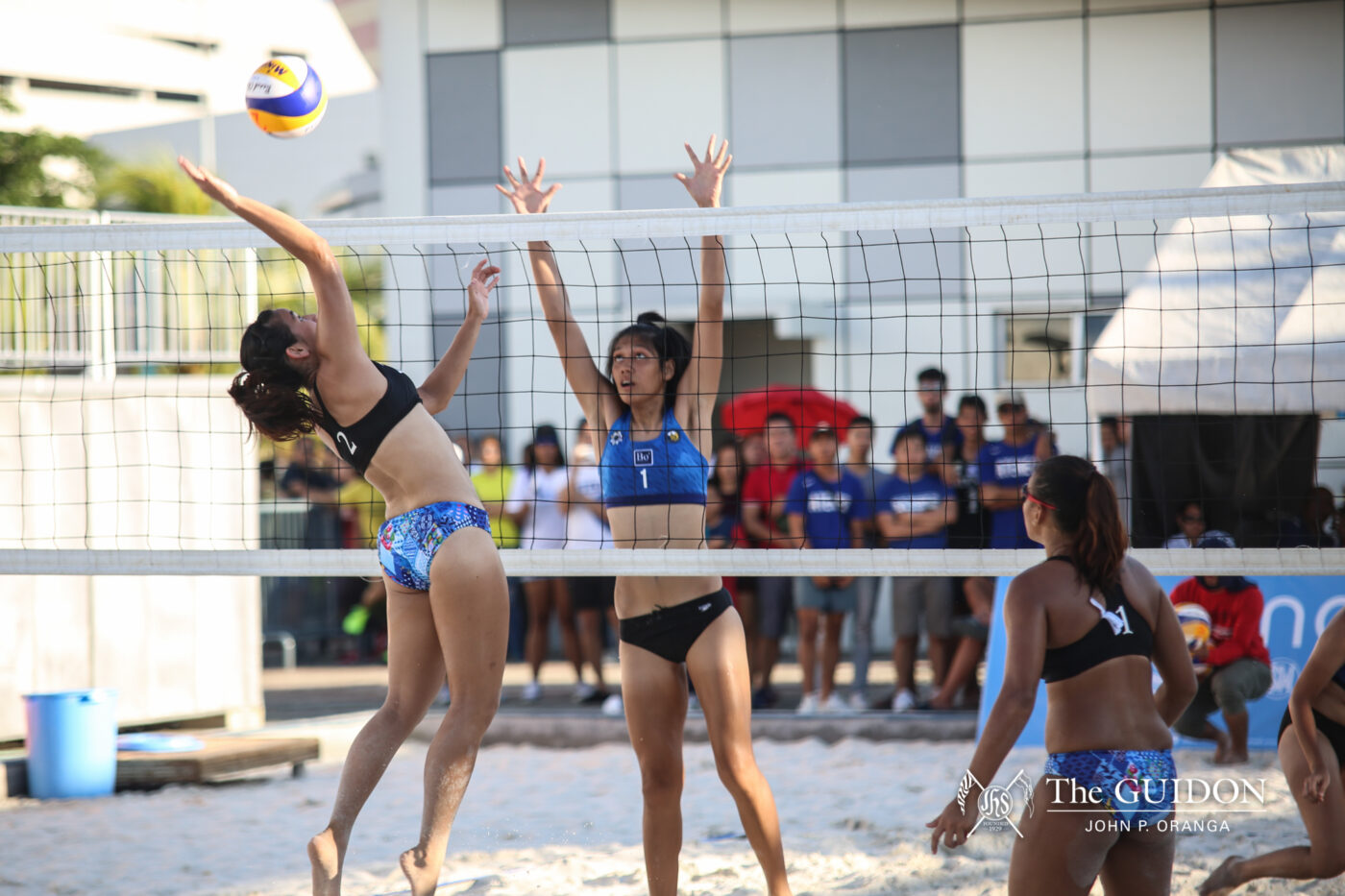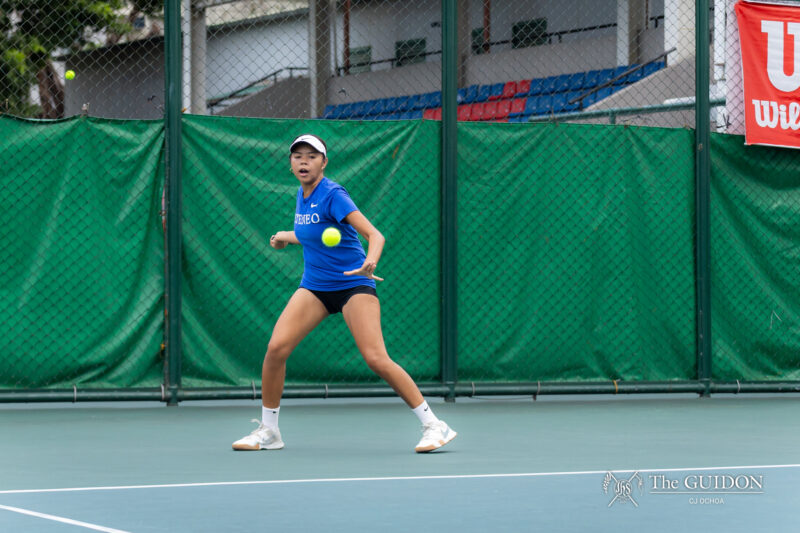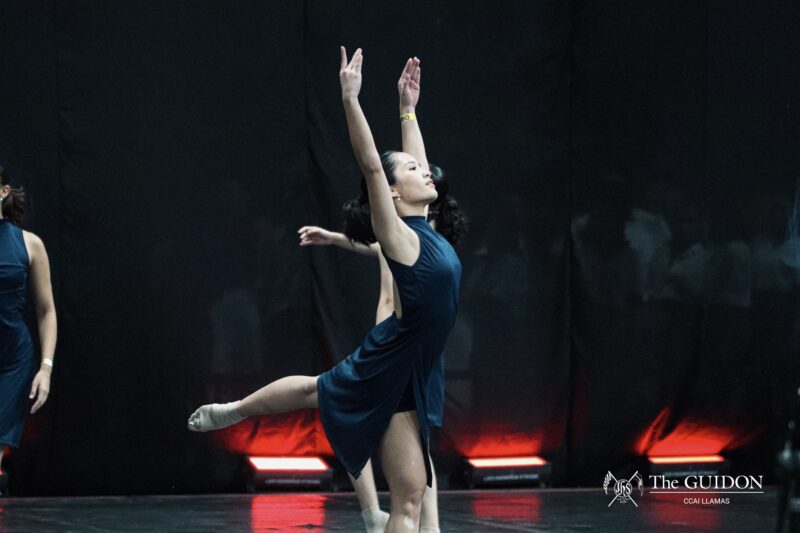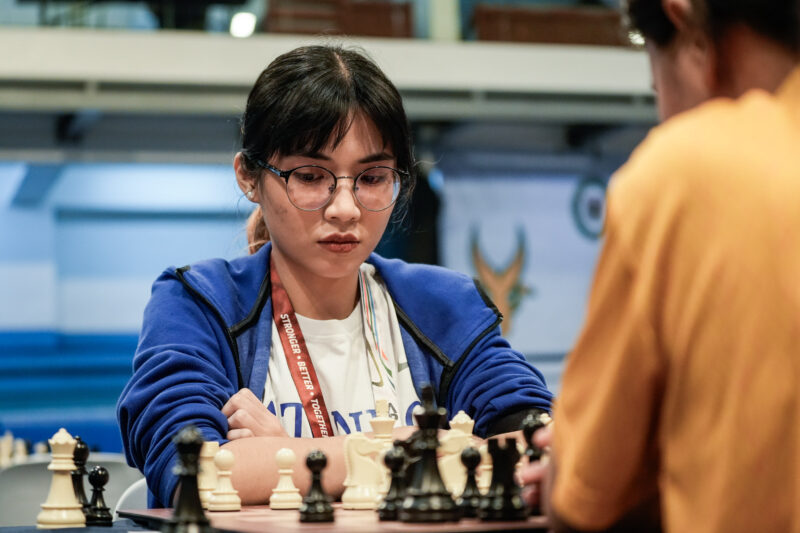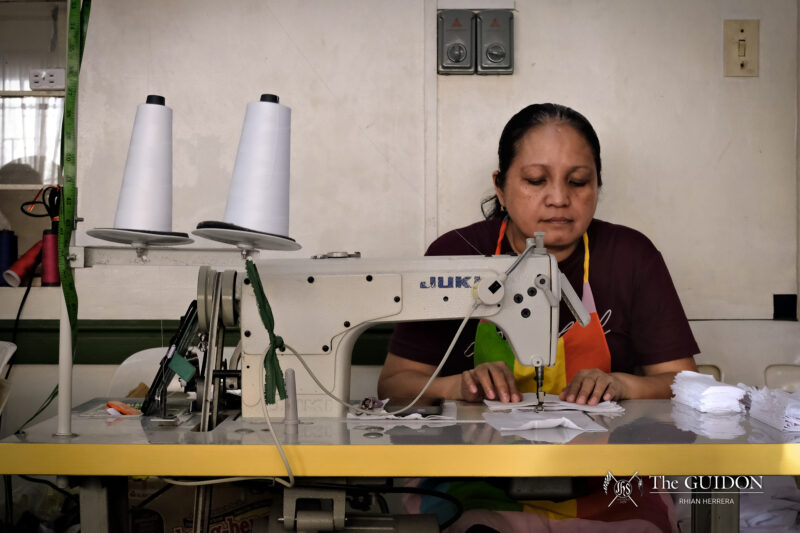A variation of the ever-growing sport of volleyball, beach volleyball has been a part of the University Athletic Association of the Philippines (UAAP) lineup since Season 70. Last season, the Ateneo Men’s Volleyball team finished in sixth place while the Women’s team finished fourth. For most people, these results may seem surprising since the Blue and White has been a powerhouse and a constant title contender on the collegiate court.
For the men’s team, the duo for Season 79 included four-time indoor volleyball Most Valuable Player (MVP) Marck Espejo and four-time best setter Ish Polvorosa. Winning experience proved to be a huge factor in the tandem, as Espejo led Ateneo to its last championship on the beach in Season 78 alongside that season’s MVP Ysay Marasigan. The succeeding year, however, they finished just shy of the Final Four.
Season 79 women’s team, on the other hand, was composed of service specialist Kim Gequillana and indoor volleyball MVP candidate Michelle Morente. Unfortunately, the De La Salle University Lady Spikers defeated the duo in two sets in the first round of the playoffs.
While beach and indoor volleyball might be fruits of the same tree, their tastes definitely differ. Variations in environment, rules, and layout between the two mean that success indoors doesn’t always translate to success on the sand. The differing principles in training, technique, and the unforgiving weather conditions change the nature of the game.
Outdoor effects
Exposure to the elements of nature is perhaps the most daunting aspect of beach volleyball. Moving around the sand is grueling under the murderous heat of a blazing sun which is absent on the wooden court. Besides this, the weather always plays a big factor since games don’t stop when it rains.
“Rain or shine, beach volleyball would only stop unless there’s [lightning] nearby, but other than that, you would keep playing,” explains Men’s Volleyball captain Karl Baysa. “So that’s definitely hard, and [when you include the] wind, strong wind, you really have to control the ball because the wind brings the ball.”
Aside from bearing the harsh environment of an outdoor game, the dimensions of the sand court can take some getting used to for the avid indoor player. The ball is slightly larger and the playing area is smaller so the proportions compared to indoor are uncomfortable.
Moreover, many indoor players can also get confused with the rules for beach, which they may feel as stricter and more demanding.
“[When it comes to] setting, you can’t set. So it’s either you dig the ball or you use the palm of your hand,” says Gequillana, who will be with indoor captain Bea De Leon on the sand for Season 80. “Basically, you can’t set. You can, but then the ball shouldn’t spin so we don’t want to take the risk. We just dig.”
Importance of chemistry
Above all, the biggest difference between beach and indoor volleyball is that beach only consists of two players. In indoor volleyball, there are six players who each have a role to play. Some players specialize in blocking or attacking while some are good at defending or setting. In beach, however, all those attributes should be packed in each player, so he or she has to be multidimensional.
Synergy is thus the key factor in winning because a beach player can only rely on one other person.
“When I say chemistry, you can have two of the greatest players being partners in the beach, but if they don’t have chemistry or if they don’t mend together as a team, then for sure they’re going to lose against a team who’s more in sync together,” says Baysa, who will be partnering up with fellow graduating player Espejo for Season 80. “Definitely, the partnership is not hard, but you have to build it.”
The sport focuses on control and energy conservation since the play of a turn is shared only between two players. The sand already makes everything more exhausting and the heat more tiring, so players have to play smart, especially with their movements. This is the main reason why beach players normally don’t jump when they serve–jumping is much more taxing on sand.
Difficulty in preparation
Several factors make it hard for the Ateneo teams to mirror their indoor success.
Since the school does not have the luxury of recruiting and training as many volleyball players as it wants, the program simply transitions the best indoor players to beach volleyball by giving them as much experience on the sand as possible.
“Beach volleyball is really experience. The more you play [on] the sand, the more you get used to it,” explains Men’s Volleyball head coach Oliver Almadro.
With the absence of a separate beach volleyball lineup, training has always been with constraints, especially since key preseason tournaments for indoor volleyball happen a month or two before the UAAP beach volleyball season.
Training is also a problem for the athletes. “We could’ve done better if it wasn’t really that hot…and because our trainings for beach were in the afternoon after our class, we weren’t actually used to being under the sun,” recalls Gequillana.
Furthermore, the absence of a beach volleyball high school league and the general lack of beach volleyball venues in the country make it difficult for college scouts to reach indoor players who would do well on the sand.
Transferring success
Despite all these challenges, Ateneo’s current system of transitioning indoor players to beach has found success in the past–the most prominent being the UAAP Season 78 Beach Volleyball championship. Marasigan had enough experience on the sand that allowed him to carry his team to a trophy finish.
The university’s program primarily focuses on indoor volleyball where it has won three straight titles. Although the current system in place for beach volleyball may not be what conventional beach powerhouses use, the Ateneo is still able to prosper thanks to the wealth of talent in the indoor lineups.

